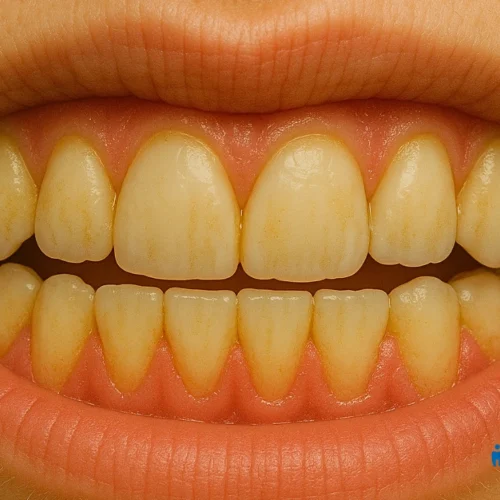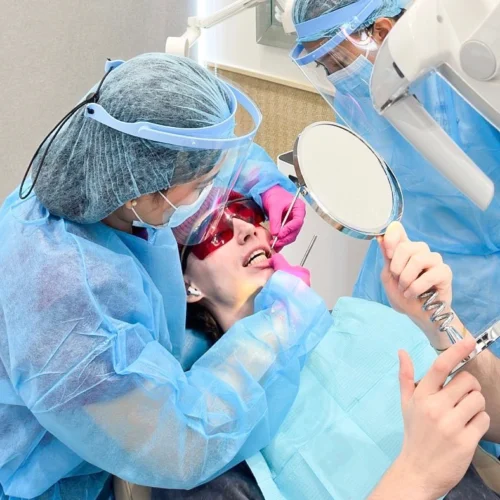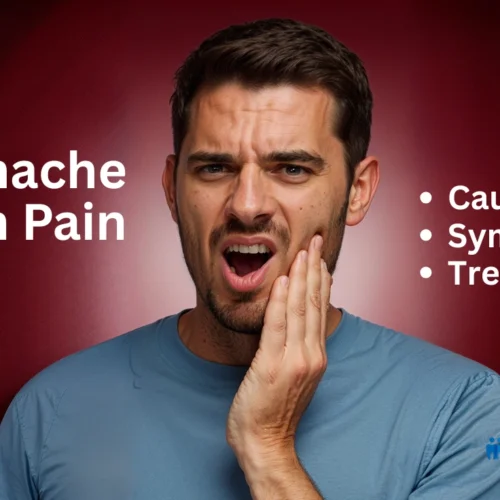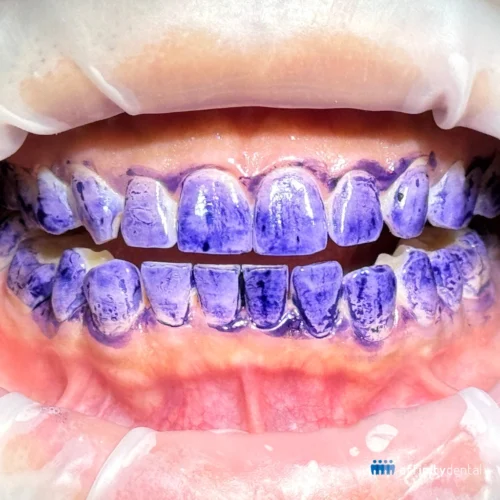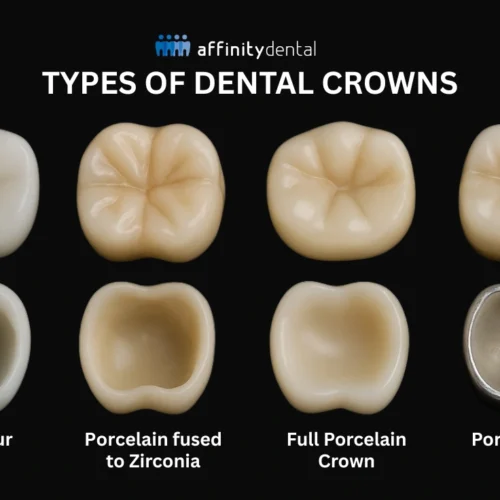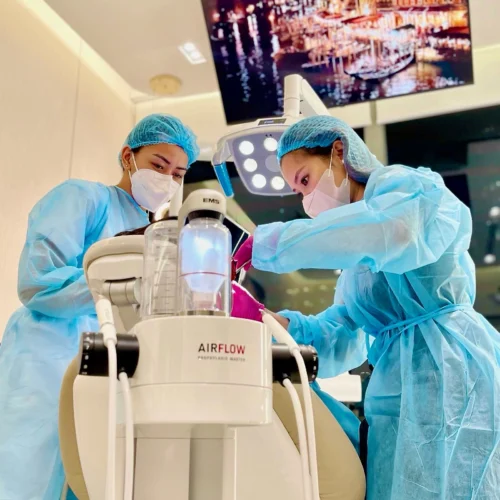What Are Biofilm, Plaque, and Tartar — and How Do You Get Rid of Them?
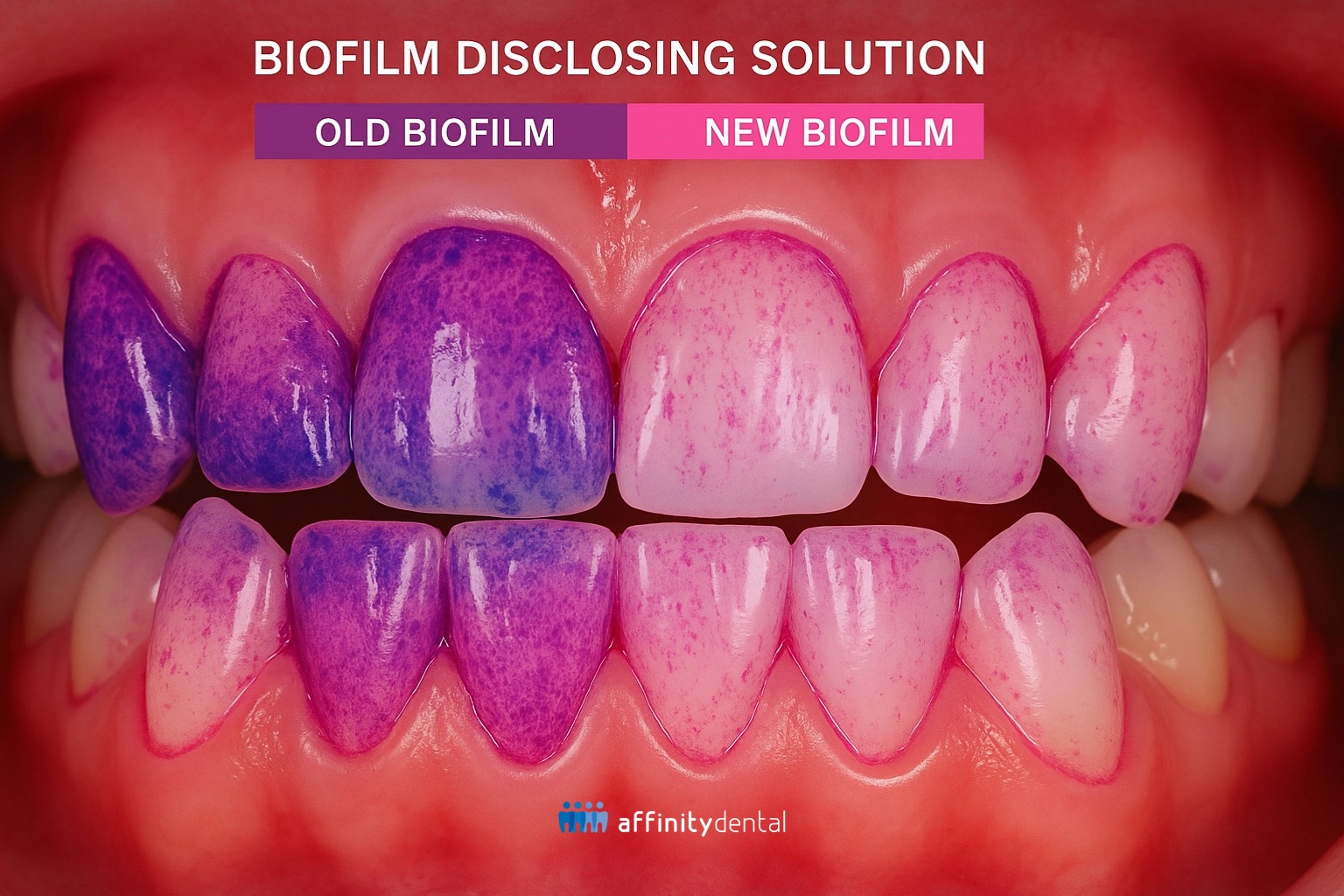
Introduction
When it comes to oral hygiene, most people think brushing twice a day is enough. But even the most diligent brushing can’t stop one invisible enemy from forming — biofilm. Over time, this sticky film can harden into plaque and later into tartar (calculus), leading to gum disease, bad breath, and even tooth loss if left untreated.
At Affinity Dental Clinics, we see these problems every day — and the good news is, they are all preventable with proper care and regular cleaning.
1. What Is Biofilm?

Biofilm is a thin, sticky layer of bacteria that naturally forms on the surface of your teeth, tongue, and gums. It begins to develop within hours after brushing. It’s not necessarily harmful at first — but when bacteria feed on leftover food (especially sugars), they produce acids that irritate gums and damage tooth enamel.
-
- Biofilm = the earliest stage of bacterial buildup
-
- Feels like a slippery film on your teeth when you wake up in the morning
-
- Can only be removed by brushing and flossing
Left alone, biofilm thickens and becomes plaque.
2. What Is Plaque?

Plaque is the soft, sticky deposit that you can sometimes feel with your tongue — that fuzzy coating on your teeth by the end of the day. It contains millions of bacteria that release toxins and acids harmful to your gums and enamel.
Common signs of plaque buildup:
-
- Fuzzy or rough feeling on teeth
-
- Mild gum irritation or redness
Daily brushing and flossing can remove most plaque. But when plaque isn’t cleaned thoroughly — especially near the gumline or between teeth — it hardens into tartar, which cannot be removed at home.
3. What Is Tartar or Calculus?

When plaque stays on your teeth for more than a day or two, minerals in your saliva harden it into tartar (also called calculus).
-
- Texture: hard and crusty
-
- Color: yellow, brown, or black
-
- Location: along the gumline or behind the lower front teeth
Tartar traps more plaque and bacteria, causing inflammation and gum bleeding. Once tartar forms, it cannot be brushed away — only a professional cleaning by a dentist or hygienist can safely remove it.
4. Why You Shouldn’t Ignore It
Ignoring plaque and tartar buildup leads to:
-
- Gingivitis: gums become red, swollen, and bleed easily
-
- Periodontitis: infection spreads deeper, causing bone loss
-
- Tooth decay and cavities
-
- Bad breath that won’t go away even after brushing
-
- Tooth loss in severe cases
These conditions often progress painlessly until advanced, which is why routine professional cleaning is crucial even if your teeth “feel fine.”
5. How to Remove and Prevent Plaque and Tartar
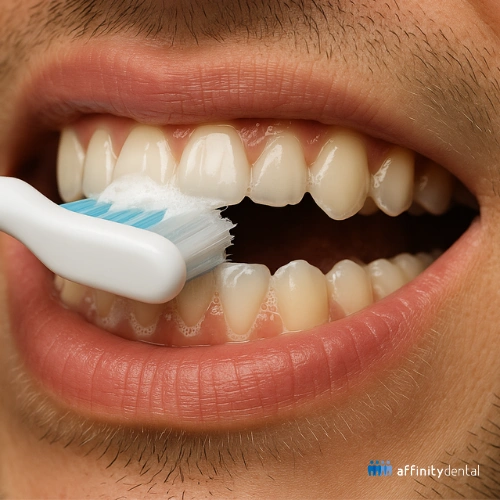
Poor oral hygiene allows plaque and food debris to build up, producing bacteria that cause bad breath.
A. Daily Home Care
1. Brush properly — at least twice a day, for two minutes each time.
Use a soft-bristled brush and fluoride toothpaste
2. Floss daily — to remove plaque between teeth where your brush can’t reach.
3. Use mouthwash — an antibacterial rinse can reduce bacterial growth.
4. Limit sugary snacks and drinks — bacteria thrive on sugar.
5. Stay hydrated — saliva naturally helps wash away bacteria.
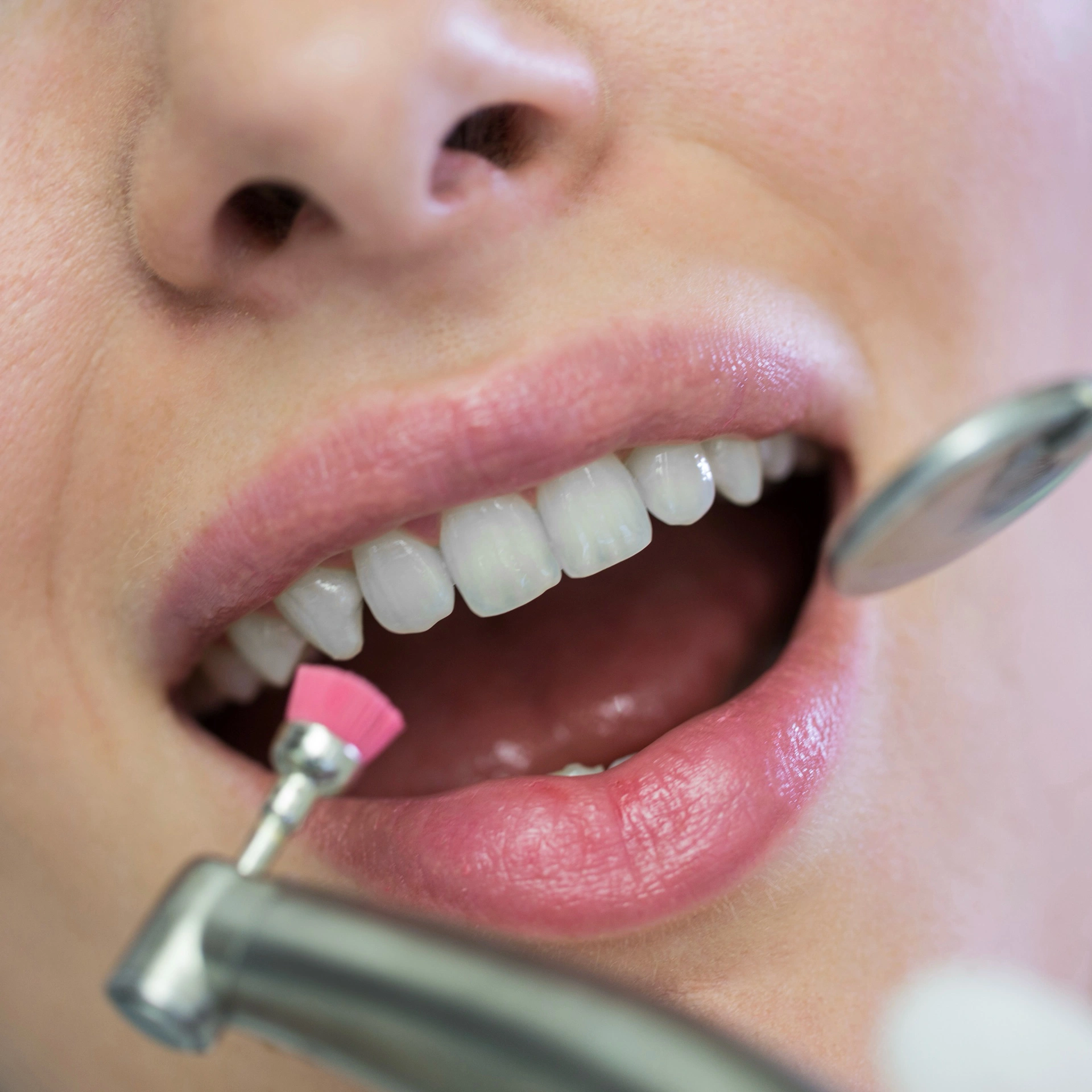
A patient receiving professional Oral Prophylaxis —removing plaque, tartar, and stains for healthier teeth and gums.
B. Professional Cleaning
Even with perfect home care, plaque and tartar can still build up in hard-to-reach areas. That’s why dentists recommend professional cleaning every six months.
At Affinity Dental Clinics, we use ultrasonic scalers and AIRFLOW® technology to remove biofilm, plaque, and tartar gently and effectively.
-
- Ultrasonic cleaning uses vibration and water spray to break hardened calculus.
-
- AIRFLOW® Prophylaxis uses air, water, and a gentle glycine or erythritol powder to remove biofilm even below the gumline — leaving your teeth clean, smooth, and bright without discomfort.
6. What About Stains?
Stains are different from plaque or tartar. They are caused by coffee, tea, wine, or smoking and attach to your enamel or tartar surface.
During your professional cleaning, AIRFLOW® polishing also removes these surface stains safely, restoring your natural brightness.
7. When to Visit Your Dentist
You should schedule a cleaning if:
-
- Your teeth feel rough even after brushing
-
- Your gums bleed when you brush or floss
-
- You notice yellow or brown buildup near the gumline
-
- You have persistent bad breath
It’s been more than 6 months since your last dental visit
8. Why Professional Cleaning Matters
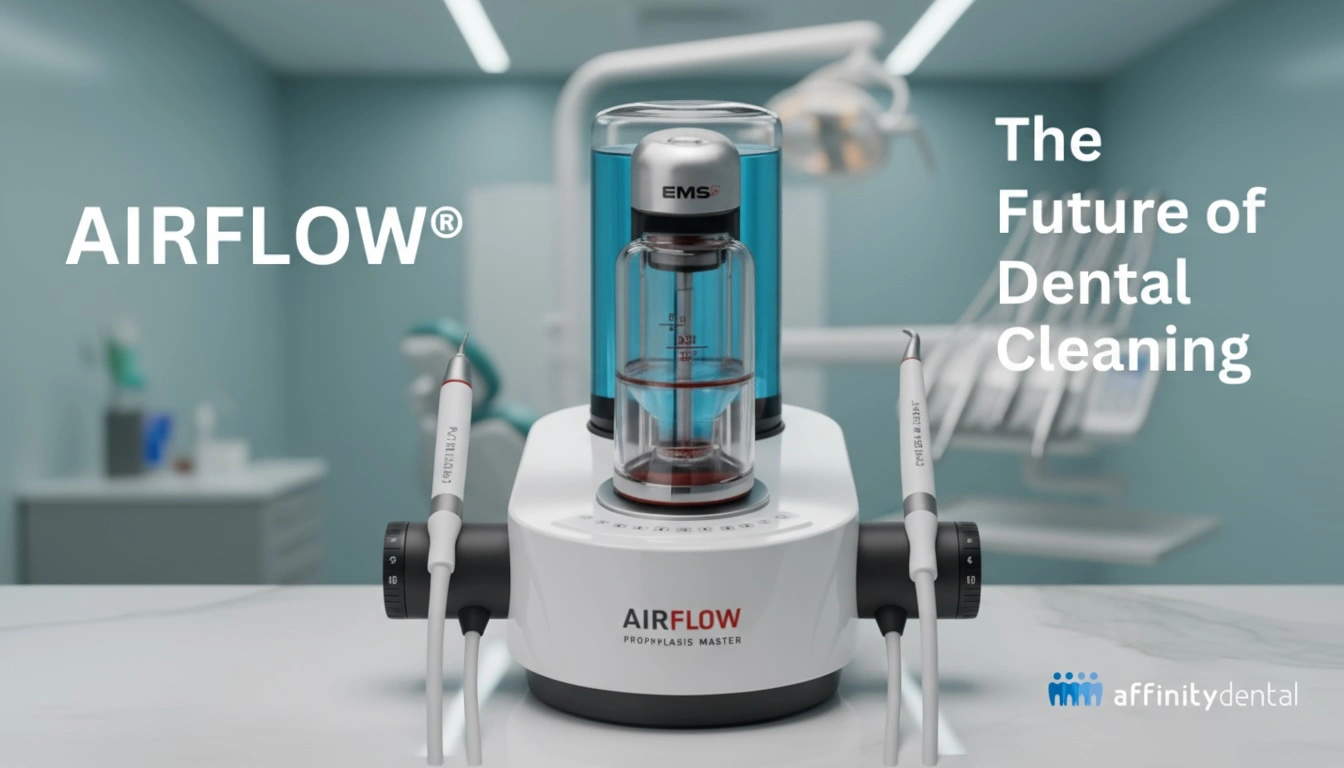
Professional cleaning doesn’t just make your teeth look better — it resets your oral health. Removing biofilm and tartar allows gums to heal, reduces inflammation, and prevents decay. It’s one of the simplest yet most effective ways to maintain your smile.
Conclusion: A Clean Smile Is a Healthy Smile
Plaque and tartar are silent enemies of oral health, but they’re completely preventable. Daily care and regular professional cleaning work hand in hand to keep your teeth and gums healthy for many years.
At Affinity Dental Clinics, all branches are equipped with advanced AIRFLOW® and ultrasonic systems to remove biofilm, plaque, and tartar safely and comfortably.
If it’s been more than six months since your last cleaning — or if you’ve started to notice roughness, bleeding gums, or discoloration — it’s time to book your appointment.
